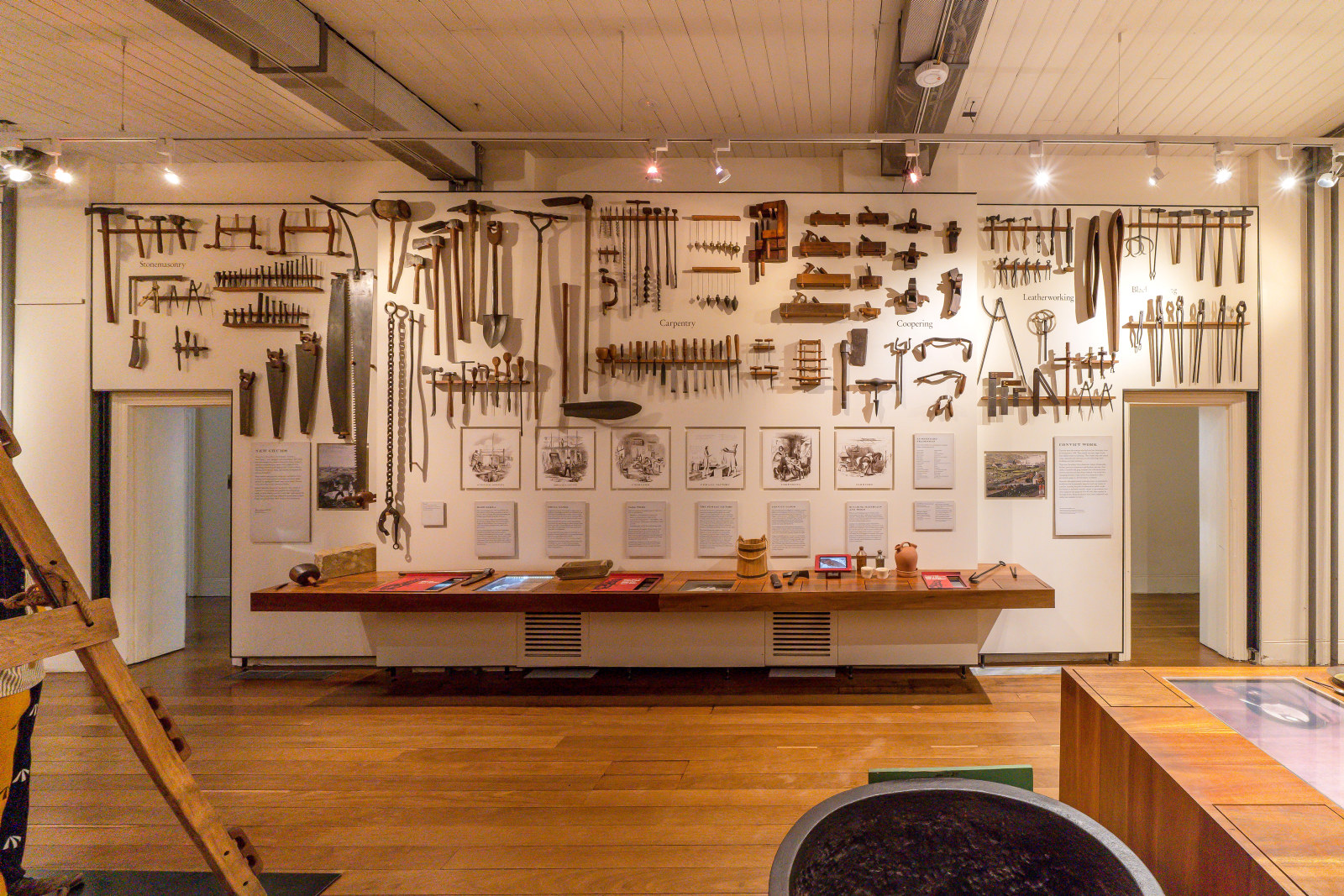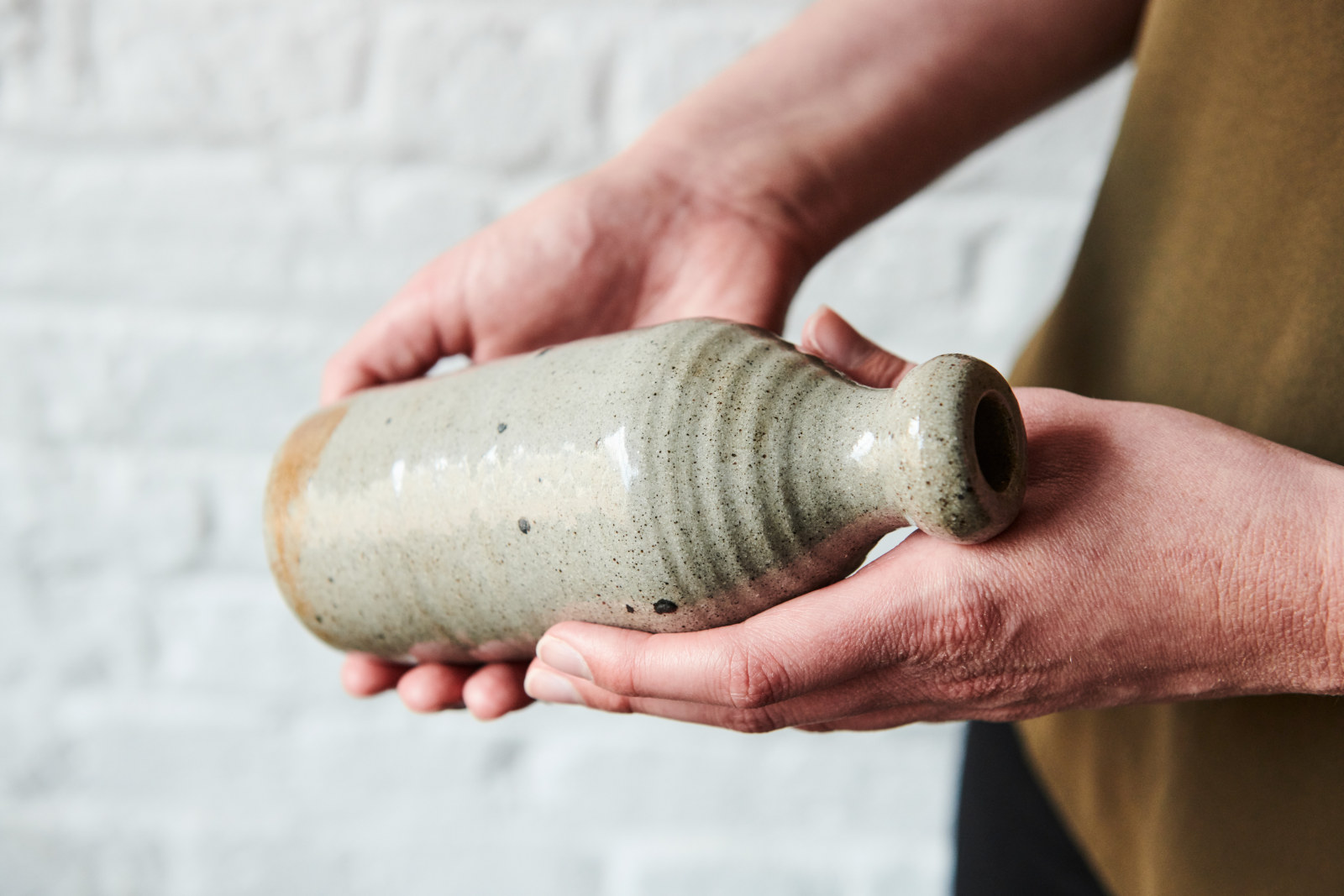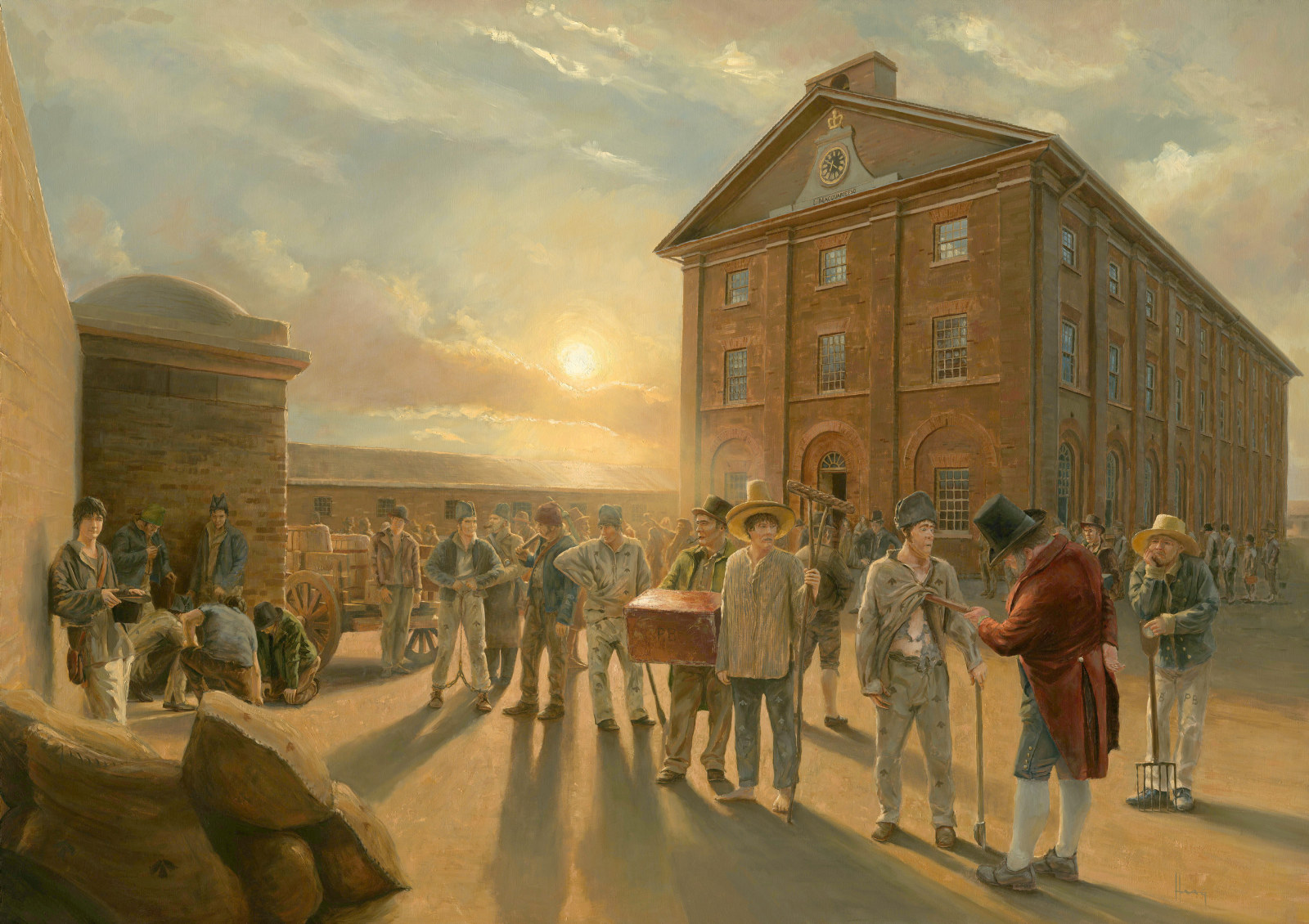Convict shirt scraps
1819-1848
In their 'flash' slang language convicts called a shirt a smish, kemesa, or flesh-bag. Deliberately torn into squares and strips, these scraps of convict shirt found under the floors of Hyde Park Barracks suggest that some convicts were recycling old clothing for new purposes. It was the rats that made their nests beneath the floorboards from soft fabric found in the wards that helped to preserve the tens of thousands of fabric scraps that were later discovered underfloor by archaeologists. Among these scraps were pieces of clothing left behind by the convicts who stayed in the wards, like these scraps of the distinctive blue striped convict uniform shirt.
Historical accounts tell us that convict tailors worked by candlelight in the wards in the evenings - possibly to earn a few coins from the other convicts. They would have used scraps like these to sew patches on torn shirts and trousers and replacing missing buttons with others they had found and stored.
… What do the men do at night?
Perhaps there are six or seven making hats, some tailoring, and others card-playing...
Convict John Barker, Evidence to the Select Committee on Security of Life and Property, 1844, 39-40.
Published on
Related

Convict Sydney
Objects
These convict-era objects and archaeological artefacts found at Hyde Park Barracks and The Mint (Rum Hospital) are among the rarest and most personal artefacts to have survived from Australia’s early convict period

Learning resources
Explore our range of online resources designed by teachers to support student learning in the classroom or at home

Convict Sydney
Convict Sydney
From a struggling convict encampment to a thriving Pacific seaport, a city takes shape.